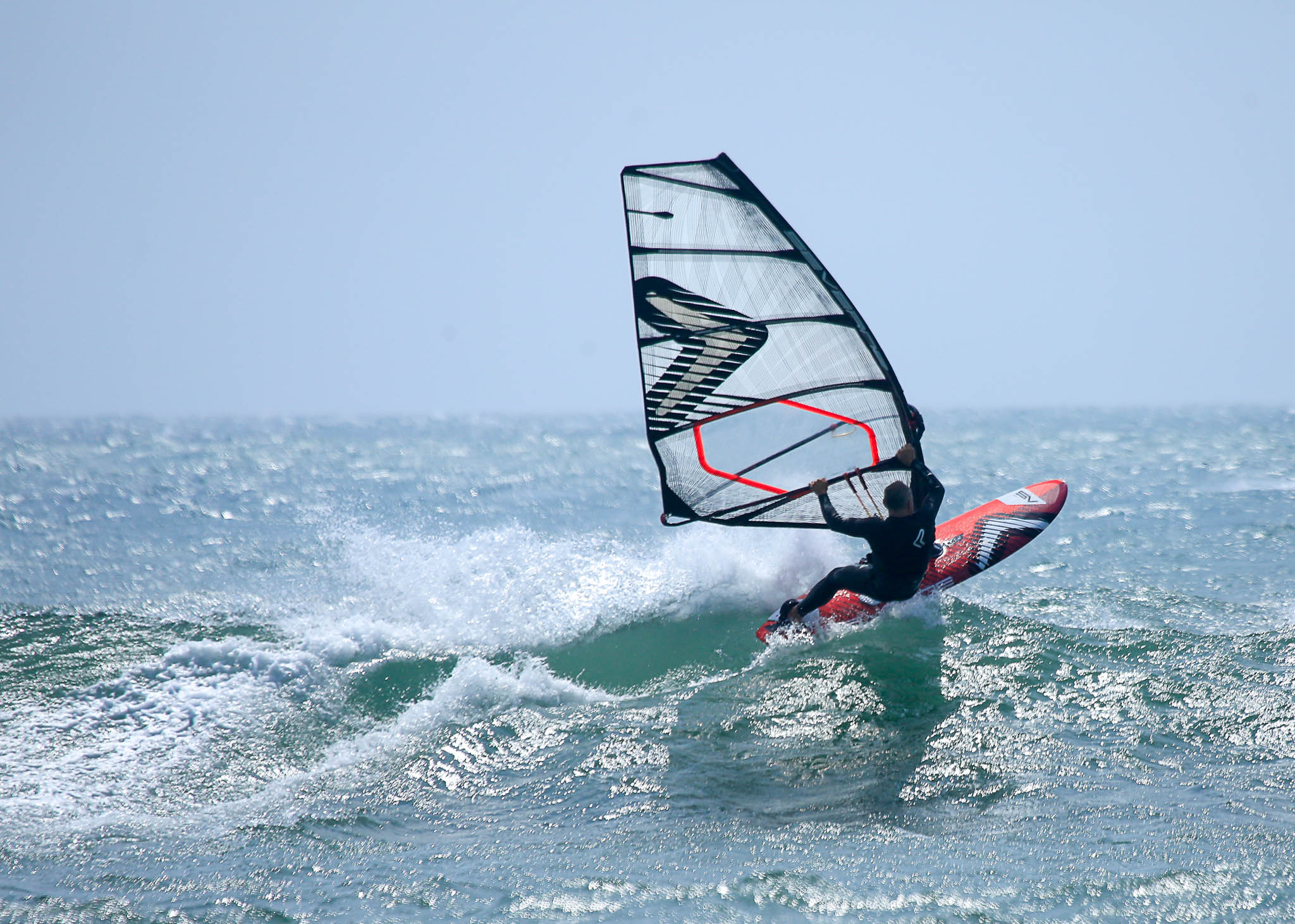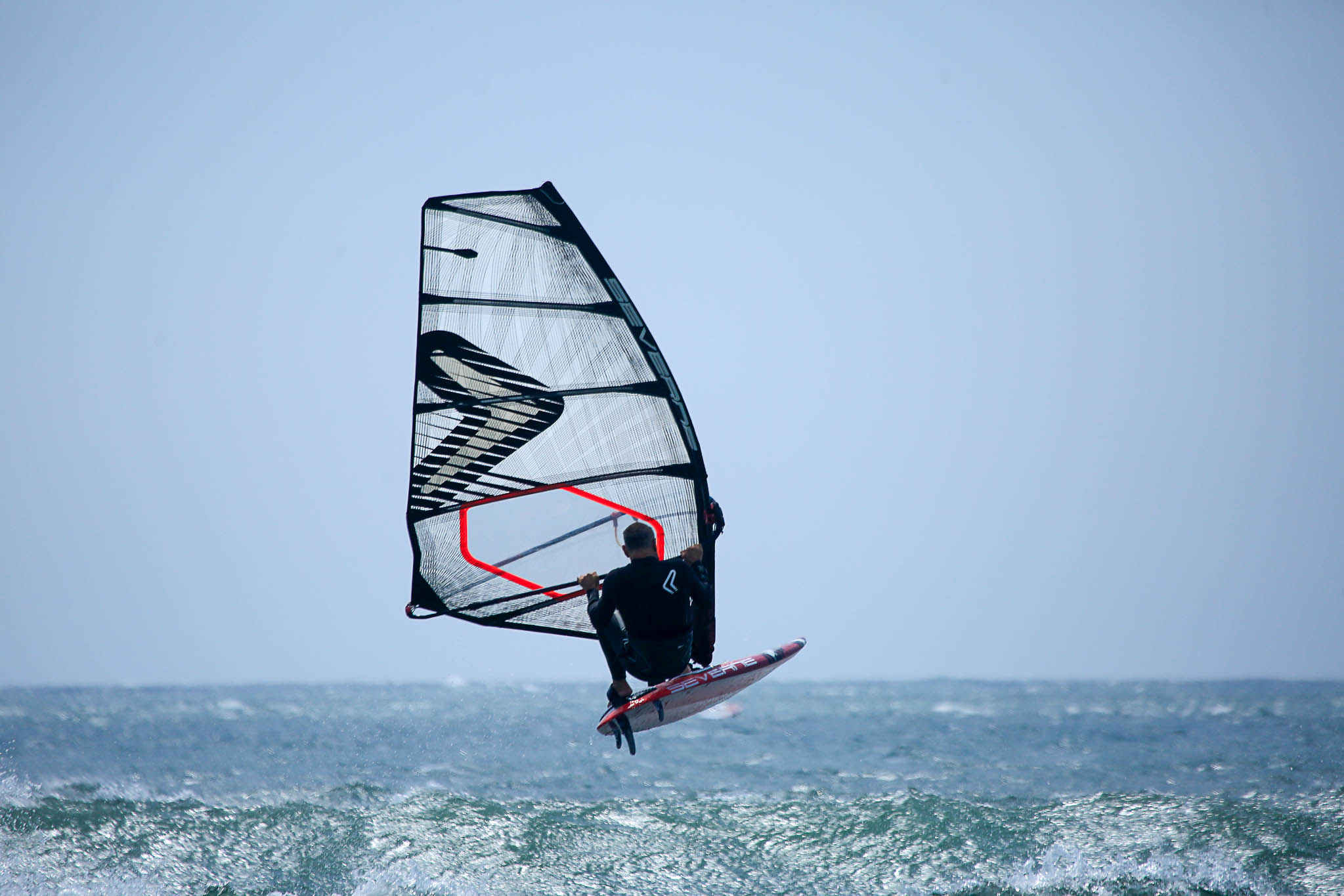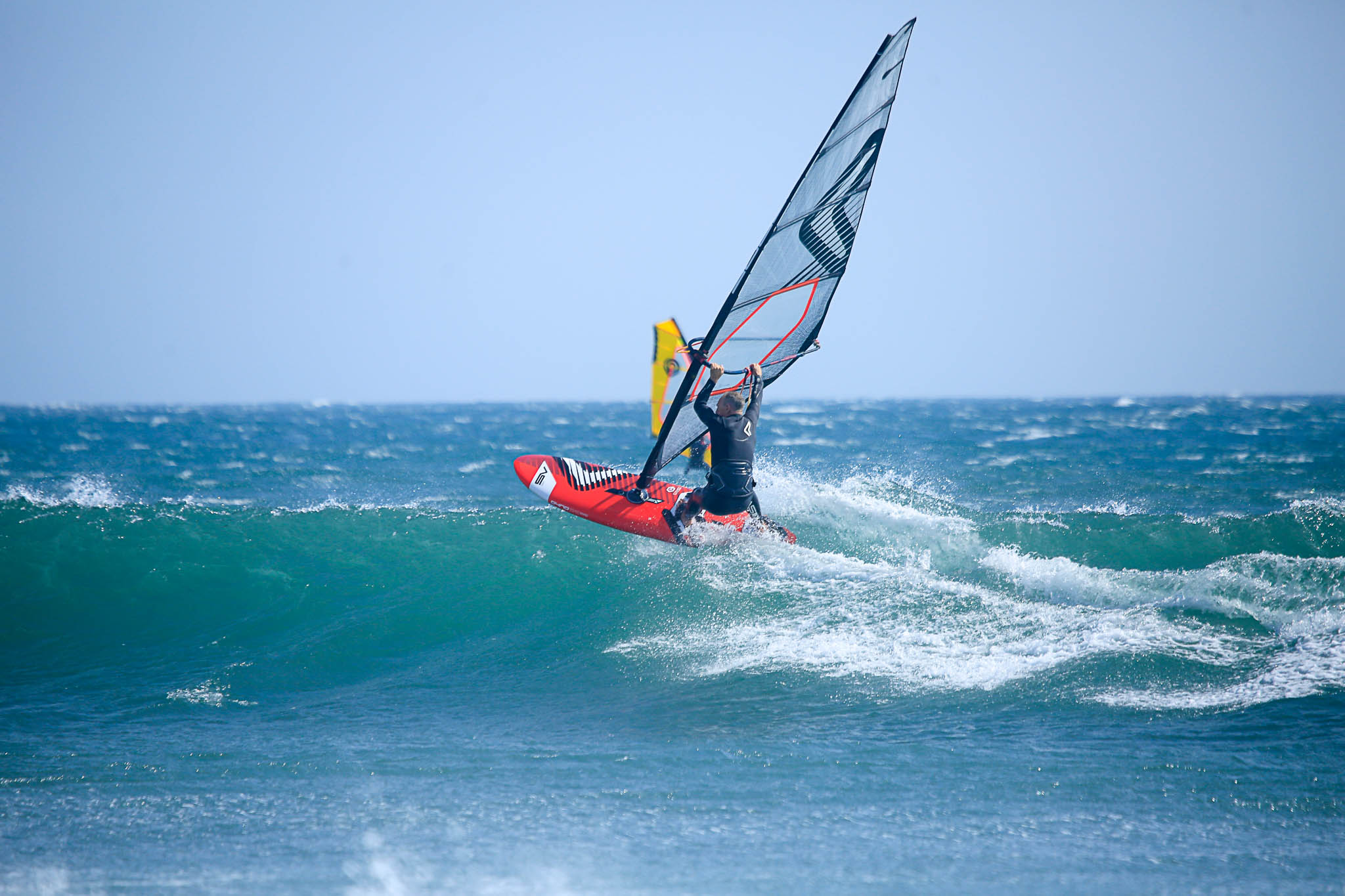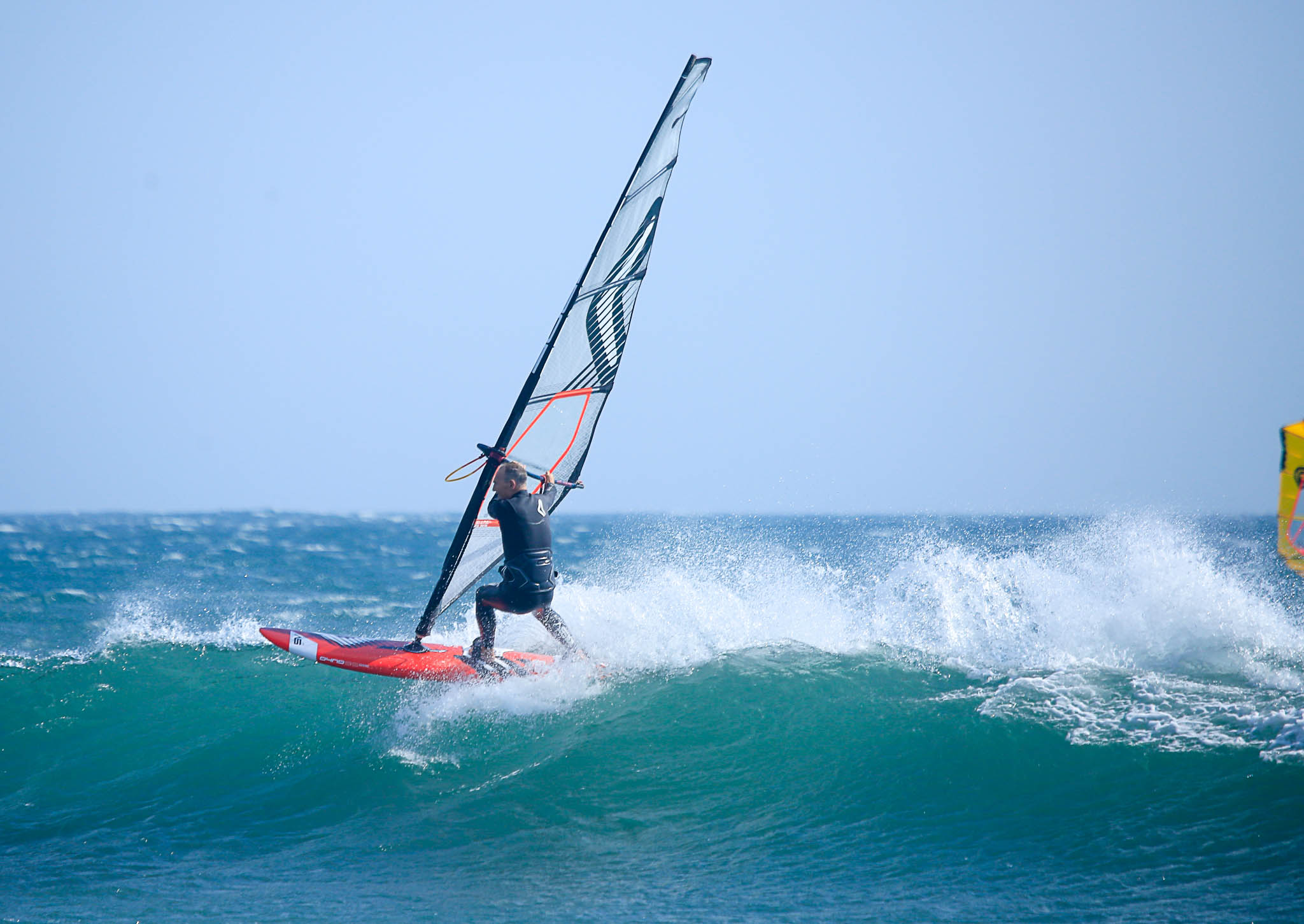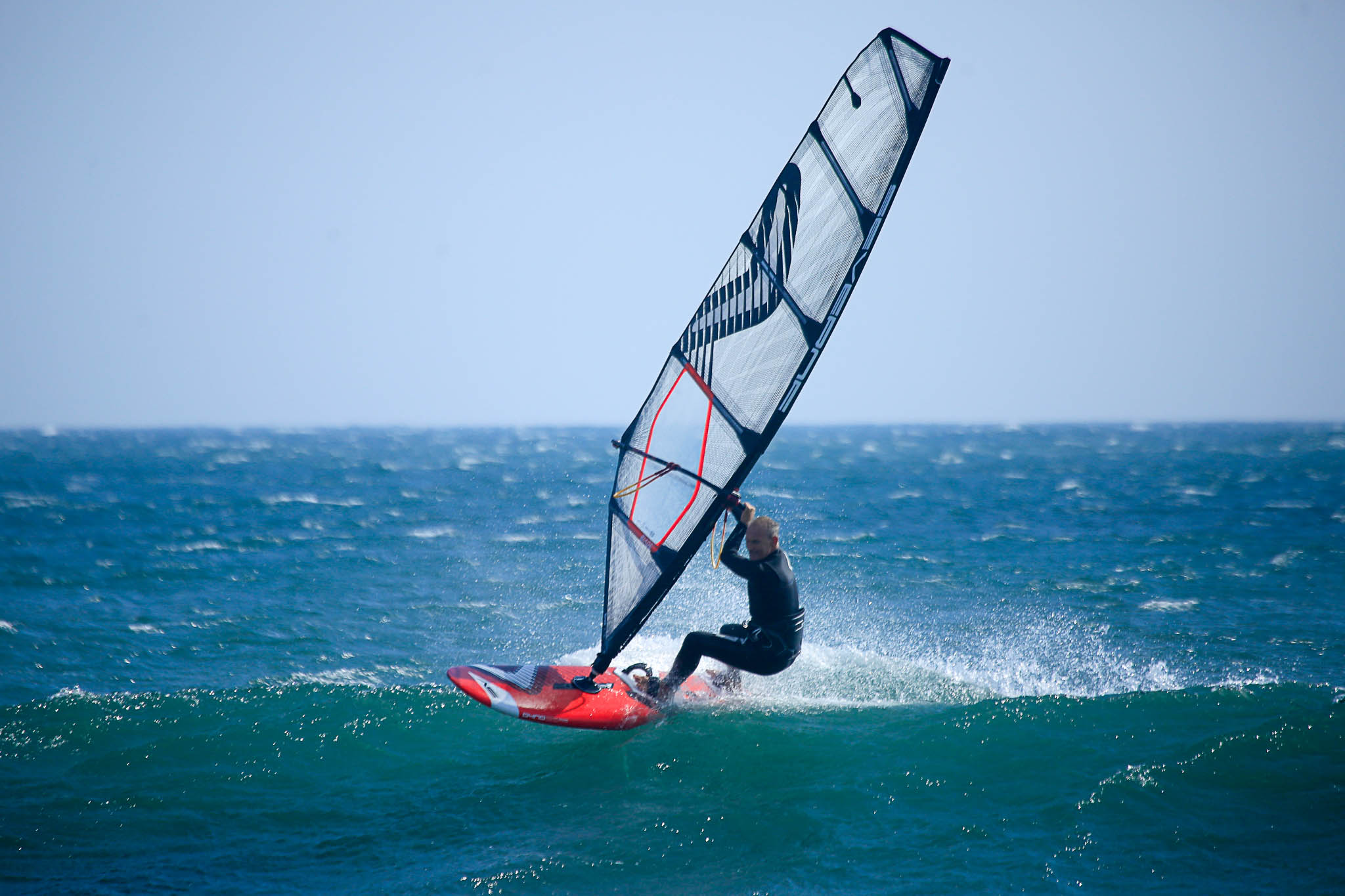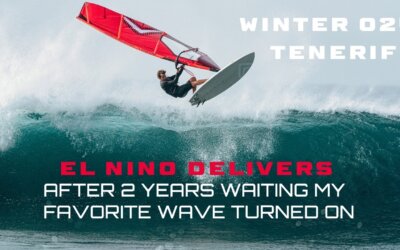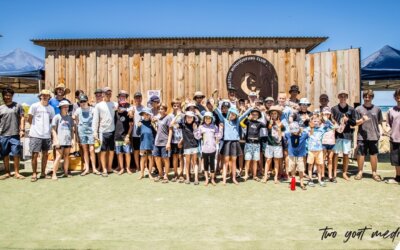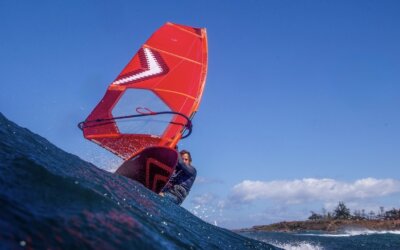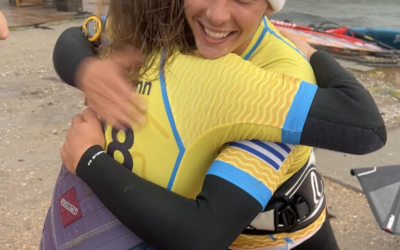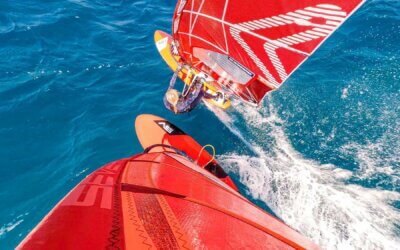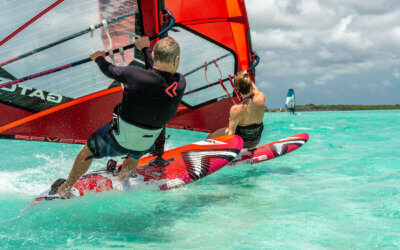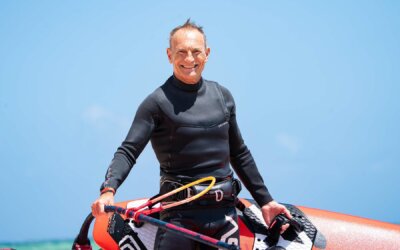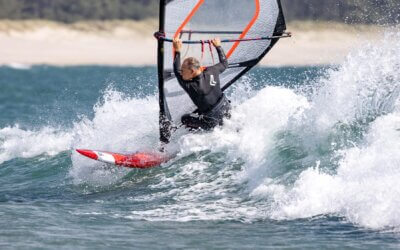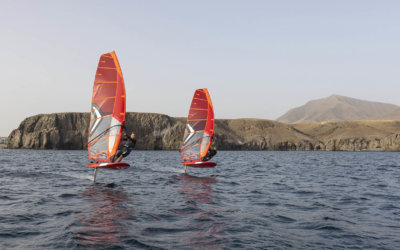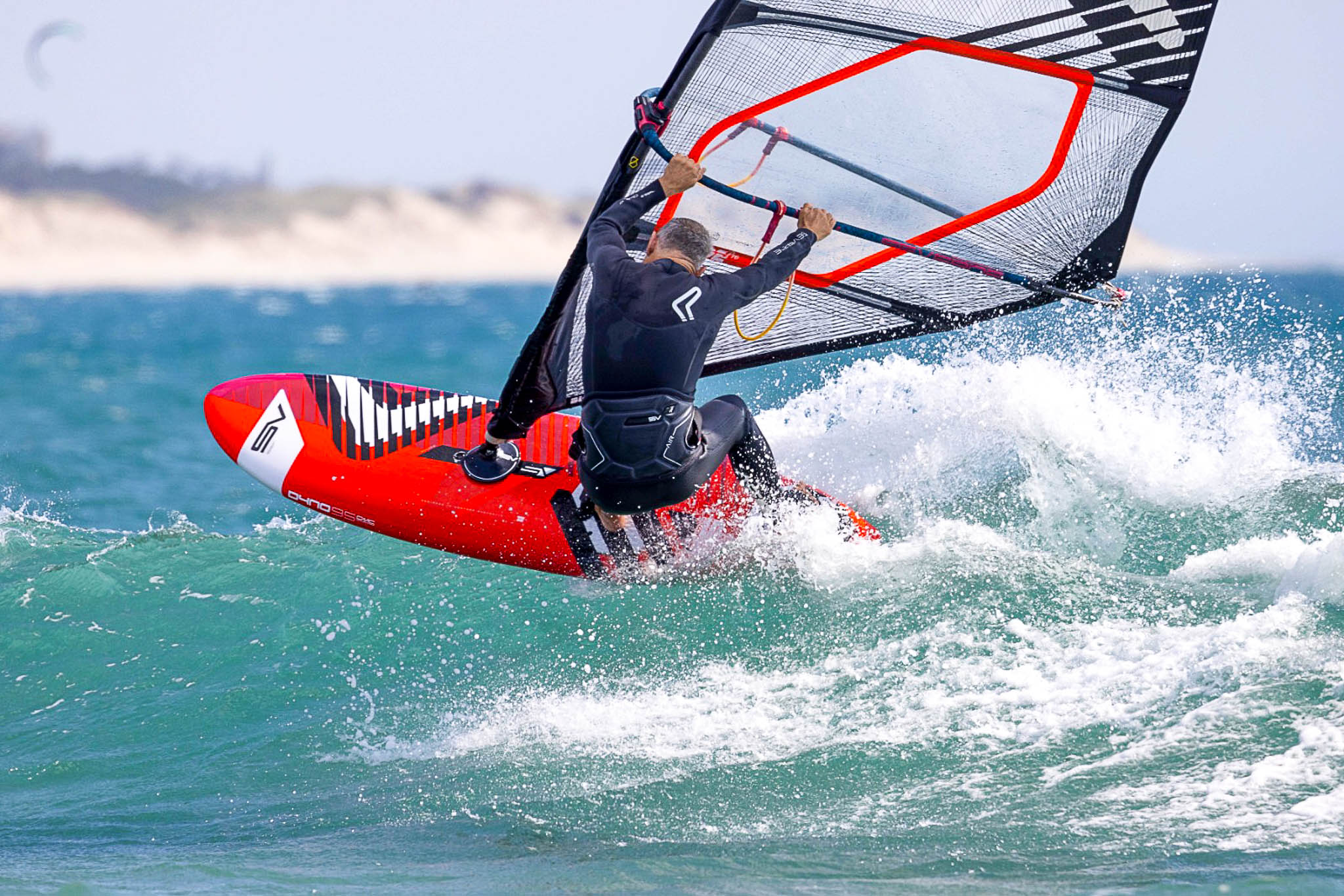
The real deal
Have you been catching some wave sailing action recently? Well, here’s what YOU can do to get yourself into waves. Simon Bornhoft continues his Windwise series on how to fully develop your windsurfing skills, maximize your time on the SV Dyno and, for this issue, continue your mission in the waves. So whether you’re new to freewave/wave windsurfing or polishing up your existing wave skills, this will give you a focus and purpose for your next sessions.
Location: FeelViana Portugal
Unlike many YouTube wave videos or radical social media posts, we’re going to look at realistic real world situations. So we’ll address catching a wave, staying on it, and looking at some common issues.
To help with your preparation and chances of success definitely check out our skill enhancing Windwise flat water drills in “How To Prepare For Waves Part 1 & Part 2”. These features will instantly help to get one wave ahead of the rest. Someone has to challenge Philip Koster and the Moreno Twins!
Are you….
- New to freewave kit or waves?
- Wanting to maximize every wave?
- Looking to improve your board handling and wave confidence?
Then this is for you.
Severne Dyno Kit Set Up
Board: SV Dyno 95
Fins: Tri Fin for maximum manoeuvrability and grip.
Mast base: Middle to back of track.
Straps: Inboard, forward, and loose!
Boom: Dropped slightly compared to freeriding.
Harness Lines: Marginally longer than Freeride.
Wind: In these shots, the wind is blowing right to left of photos.
Core Windwise Principles
Vision: Massively exaggerate looking where you want to go – chin on shoulder!
Opposition: We often lever the rig in the opposite direction to the body’s movement.
Warrior: Exaggerate looking and leaning over a very heavily flexed knee.
Windwise Touch Points
Shifting your hands is a vital component of success.
Upwind: Hands move more forward on the boom.
Downwind: Hands spread wider, clew hand pulling in close to your head – “Talk to the mic”.
Heading Out
Getting through surf can often mean being out of the harness negotiating on coming waves and having to control being in the straps off the plane.
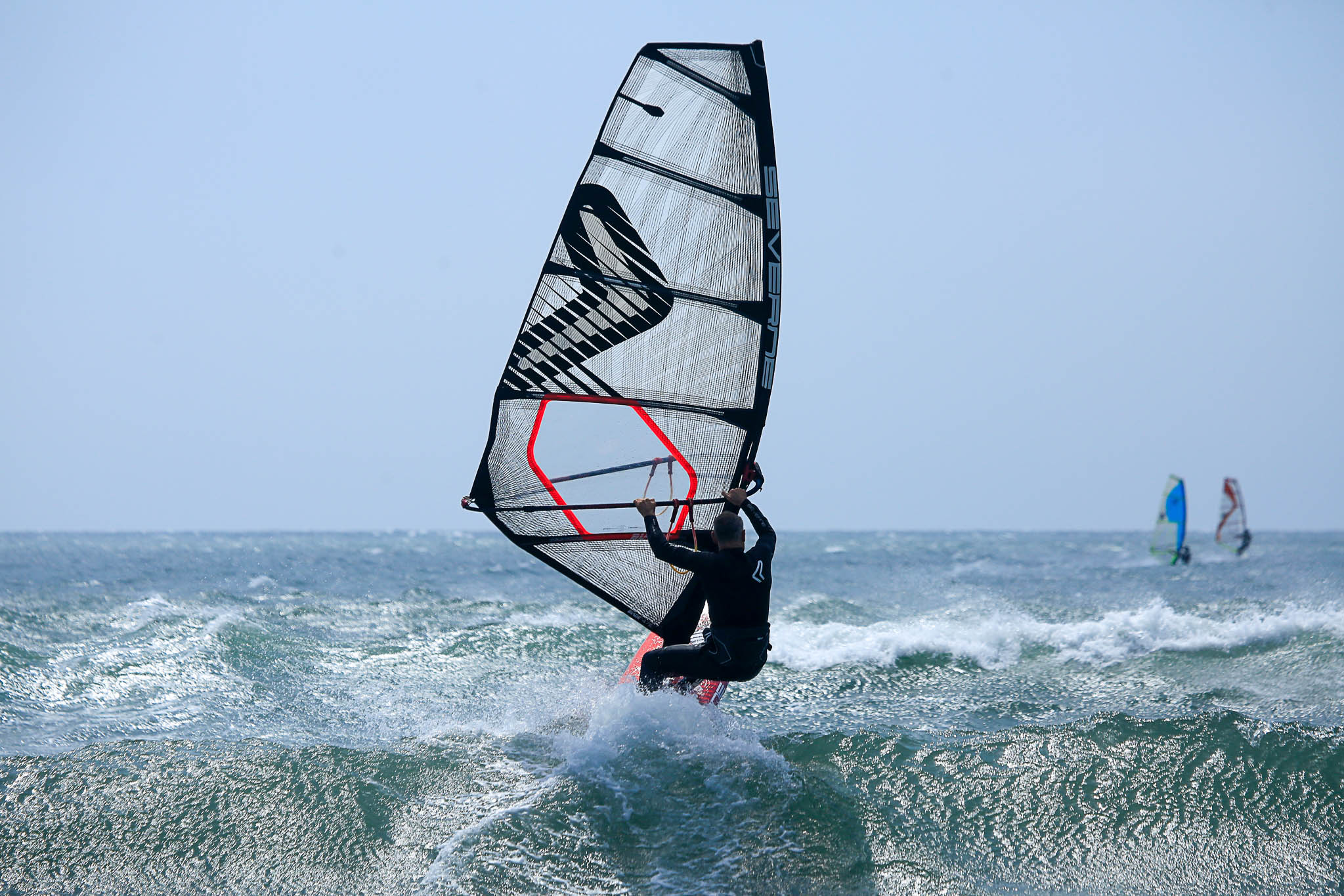
Waterstart In the Straps
A key Windwise exercise is waterstarting with both feet in the straps. This simulates the tucked up ‘in flight body position’ and really helps controlling getting over surf. The exercise teaches you to extend that front leg and tuck the rear leg in and keep the rig forward.
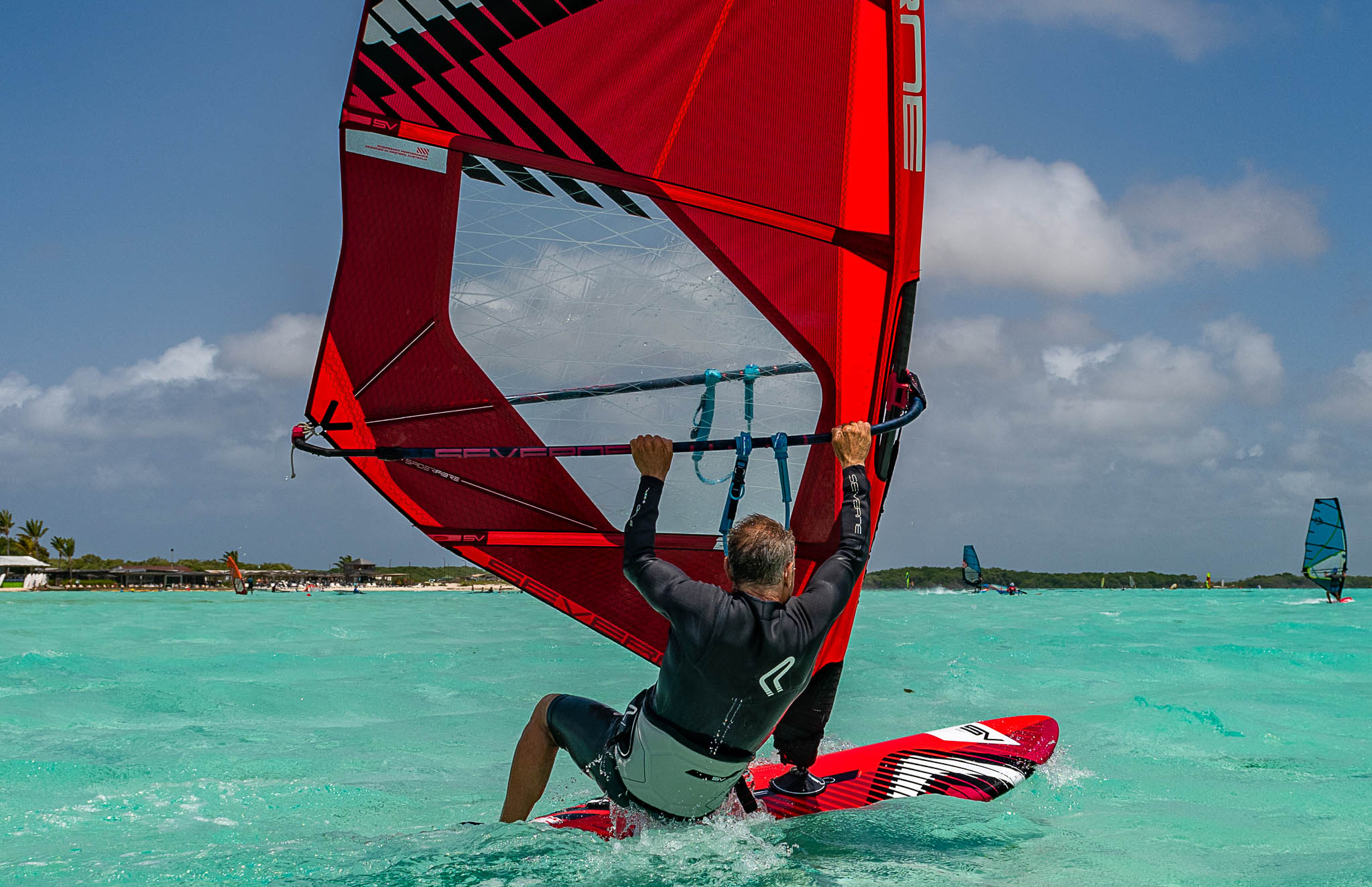
Air Time
If you get scared, over powered, or want to quash the power of an oncoming wave, head upwind and heavily flex the knees to absorb the impact. If you find you’re landing with a bang on the other side of a wave, it’s usually because the under carriage is down, so make sure you tuck up!
Sail Upwind First
It’s usually best to blast upwind first to catch the swell. This puts you in a strong position to bear away if you need to and also you’ll catch the wave quicker than if you blast straight ahead. Practicing being in the straps off the plane really helps if the wind or board speed dies at this point.
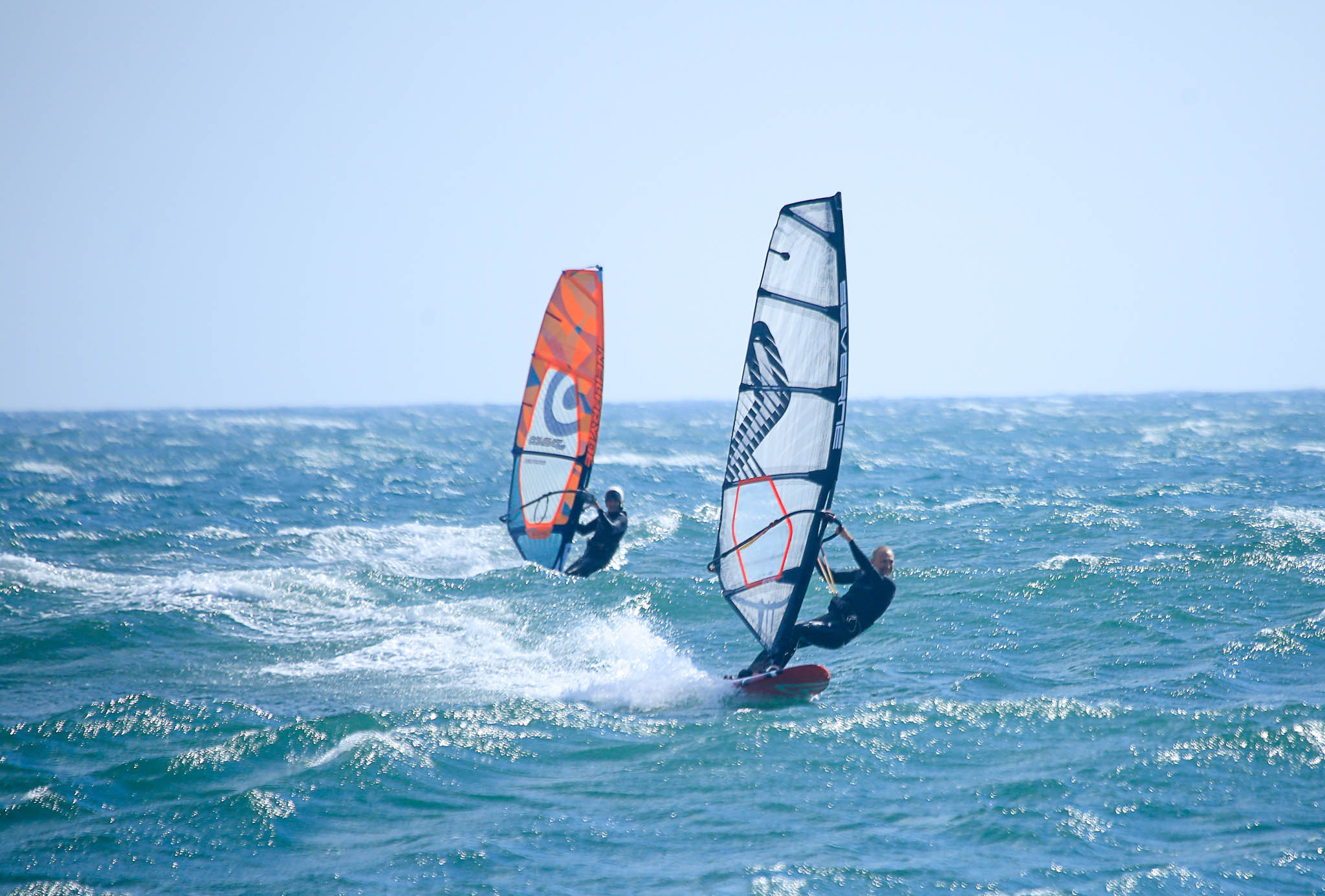
Upwind On The Wave
When the wave is forming up, you can hang in the harness until just before you’re ready to go and use that time to look ‘down-the-line’ of the wave to see how it’s forming – smaller waves only hold up for a few seconds, so get prepared to go quickly.
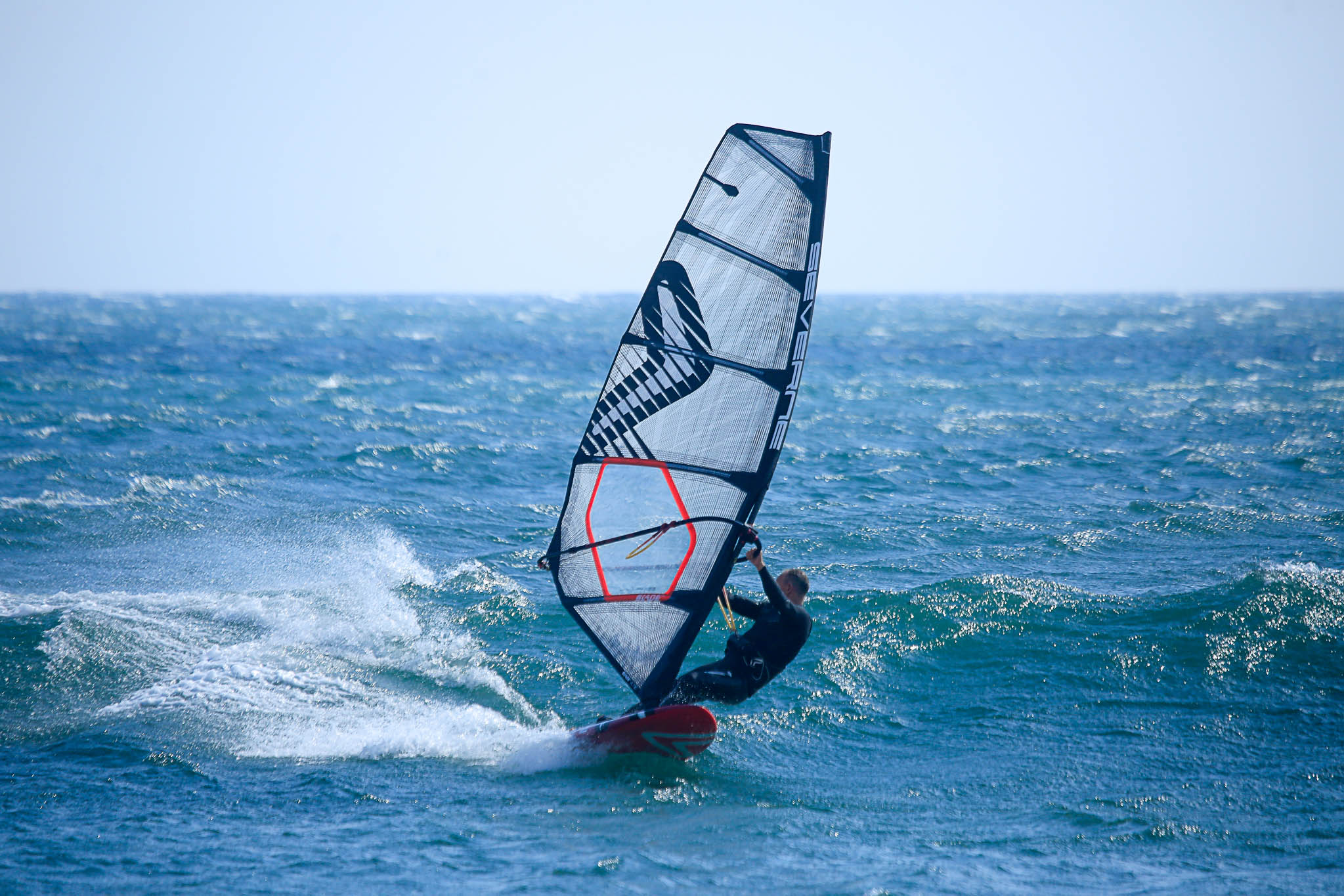
Prepare To Ride
As the wave picks you up, unhook, head upwind and try to climb to the upper half /top third of the wave to make sure you have a fast decent into the bottom turn. Heading upwind also helps to sheet the sail in ready for your bottom turn as you drop down the wave.
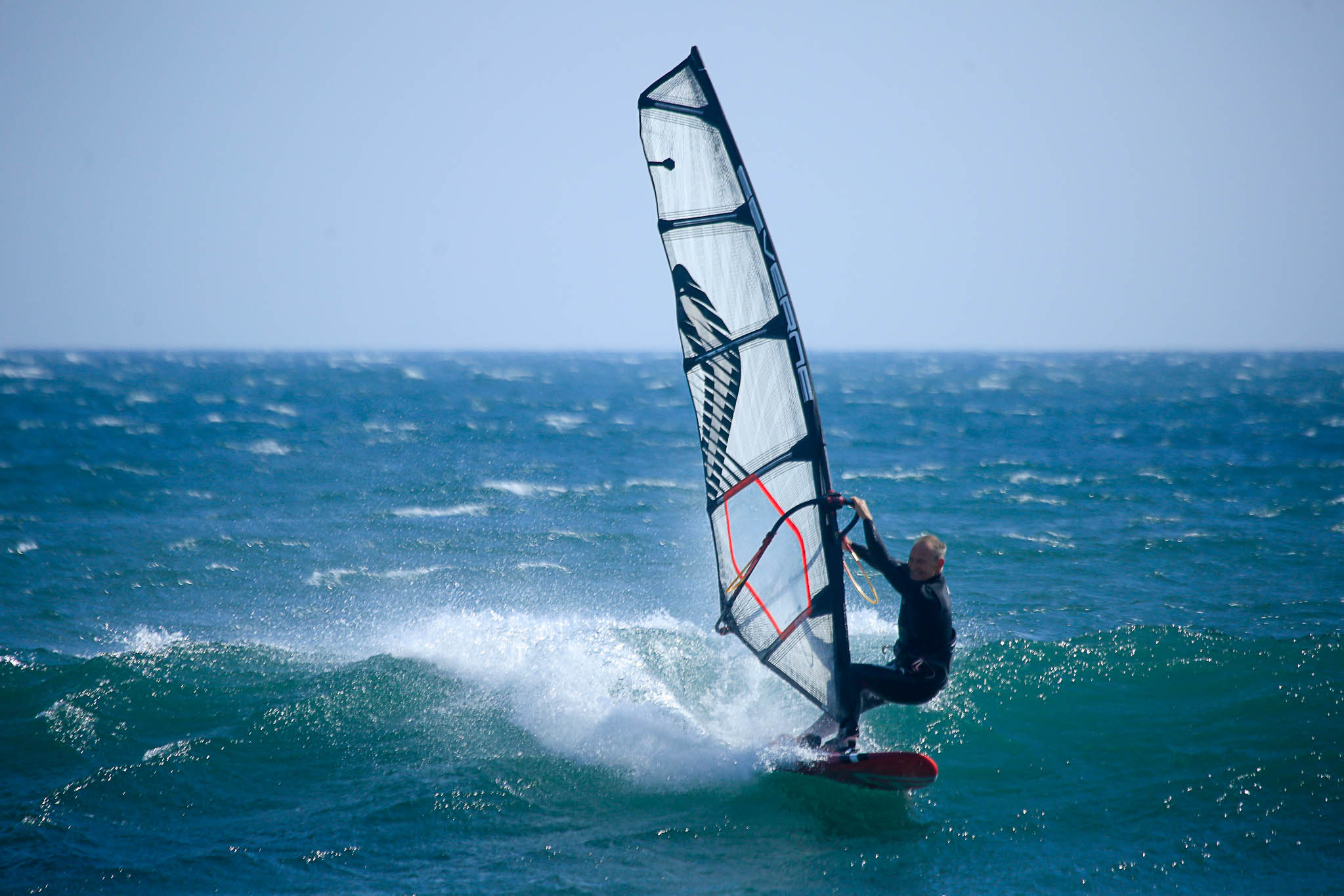
Wave Training
This can be practiced with some flat-water wave riding as in the last feature. Get into the straps off the plane, lean forward, and ‘sail ugly’ in an exaggerated Warrior position (looking and leaning forward over a flexed front knee) pulling down heavily on the boom. Keep the rig forward and, especially if the tail sinks, get the body and rig FORWARD even MORE.
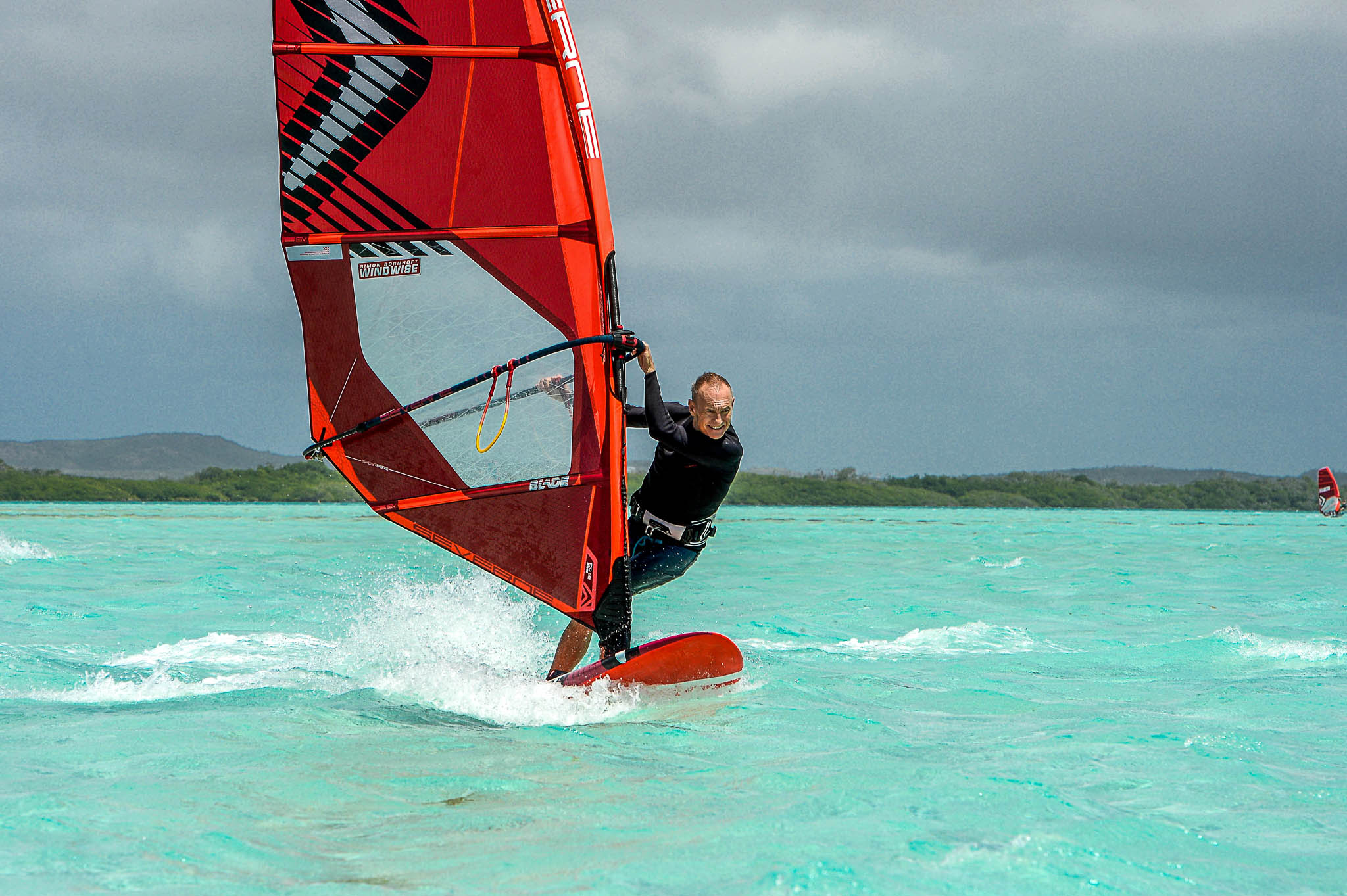
Look Look Look!
It’s vital to look down the wave to set up your move and aim for the curling peak of the wave, try to sheet in hard and go as fast as you can!
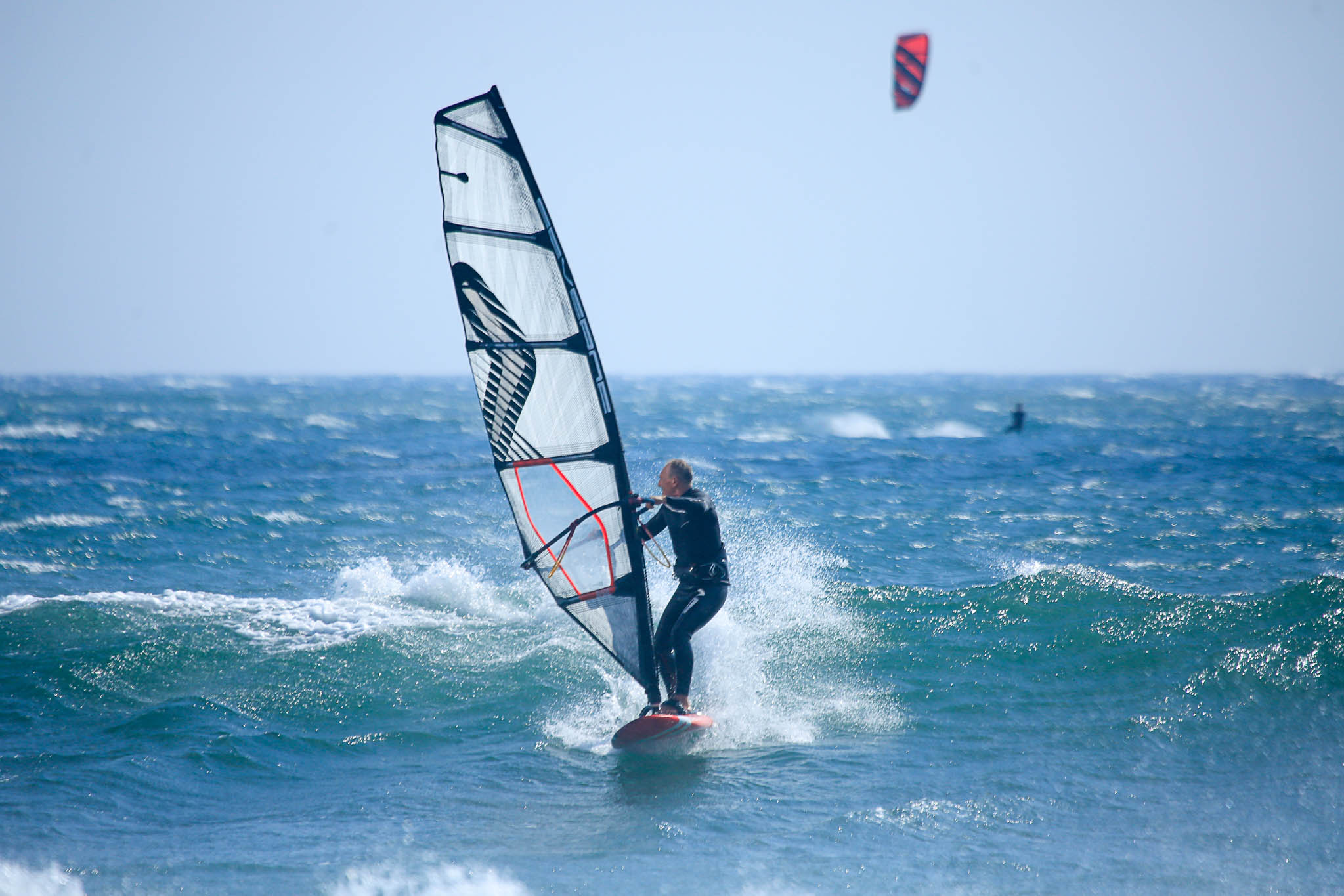
Speed And Purpose
On small waves or in under-powered situations, you’re not going to be doing the magazine hero laydown bottom turn shot. The rig will be more upright and the focus is getting the body over in towards the wave in Warrior – Similar to a carve gybe, but with both feet in the straps, flexed ankles and pressure on the toes.
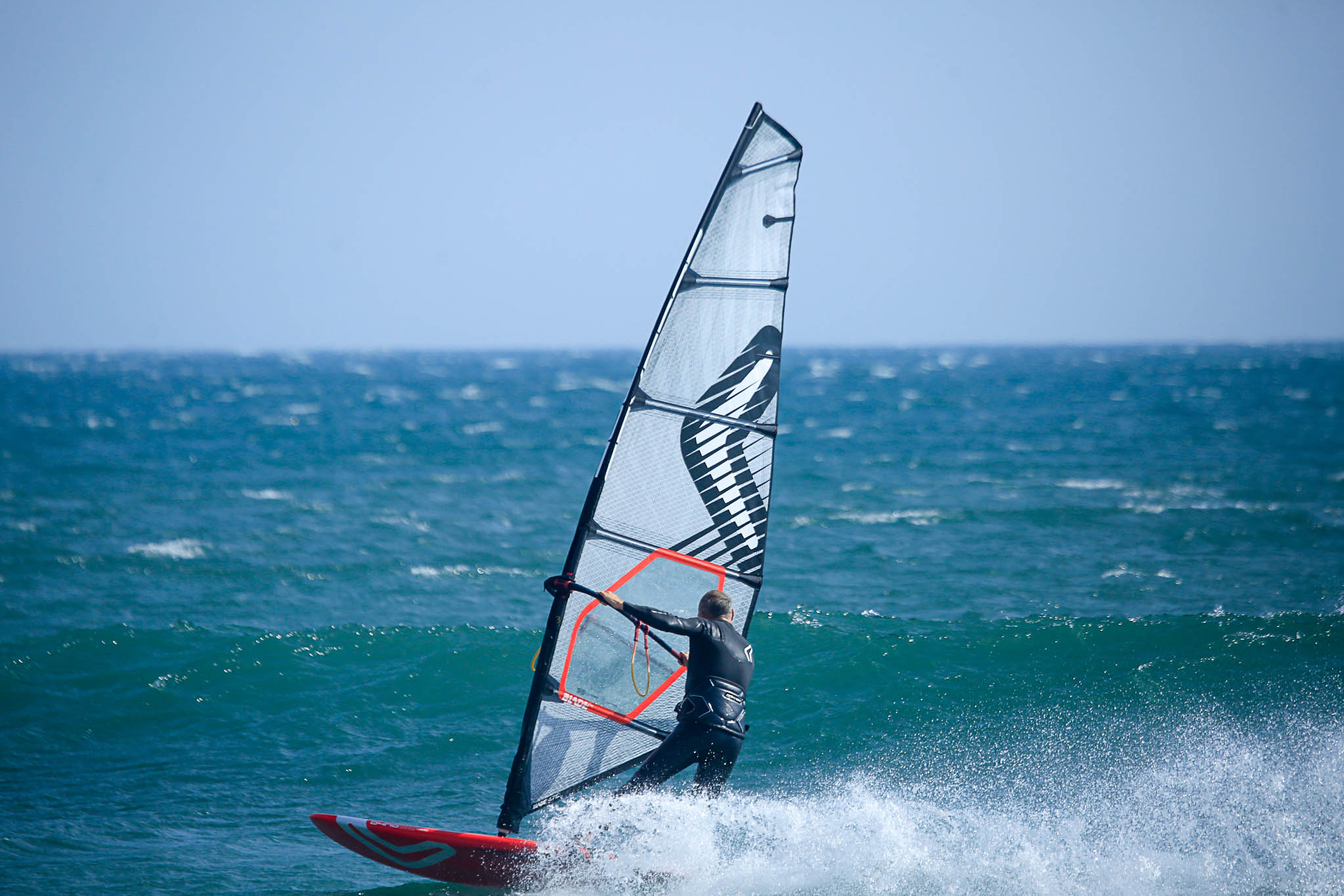
Laydown Bottom Turn
If you have either lots of speed or a sizable wave, work on sheeting in and back and laying the rig down more on the bottom turn. Practicing laydown gybes and 360’s on flat water really helps build confidence in this situation.

Top Turn
On the top turn, you’ll need to pivot the board extensively almost 180 degrees. So unless you’re going for a massive floaty aerial, 99% of the time, you need to sheet out completely. CRUCIALLY whip your head round and get the body leading the way back down the wave, so that board turns directly under the sail, just like our flat water wave riding practice.
Getting Ahead Of Yourself
It’s very, common during first time wave experiences to go too fast, too straight and run ahead of the wave and lose power. Sometimes, even a board length in front is too far ahead! Keep on the wave by either heading upwind (backside riding) or carving hard downwind (front side riding) and not straight ahead!
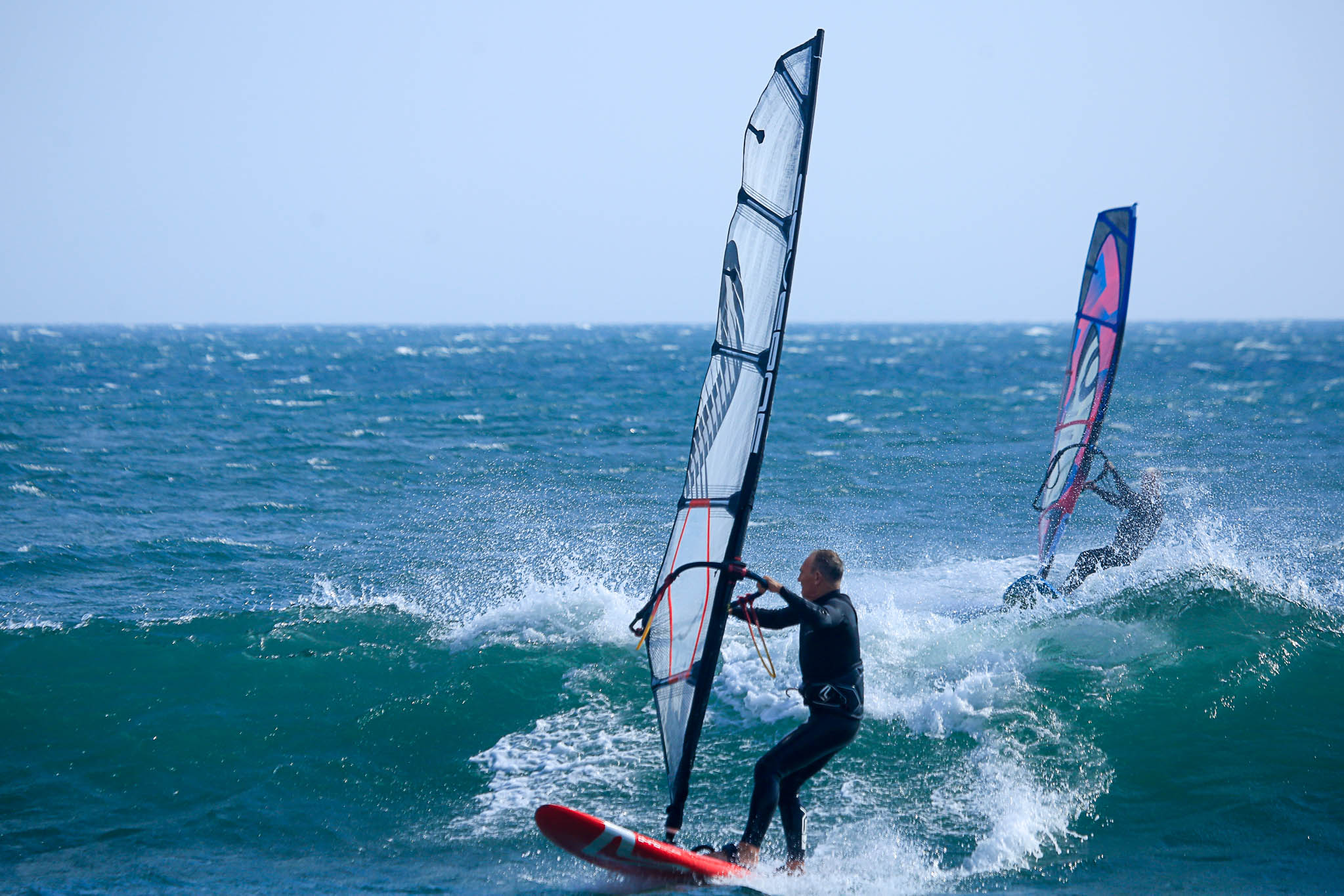
Losing It!
Falling off the back on waves is also quite common. So until you’re ready to really whack the lip of the wave, start your top turn before you get to the very crest of the wave, especially if the waves are slack. If you’re finding you’re over powered and losing the rig in the bottom turn or at the top of the wave, this is usually due to not heading upwind on your set up or not sheeting in hard enough at the start of your bottom turn.
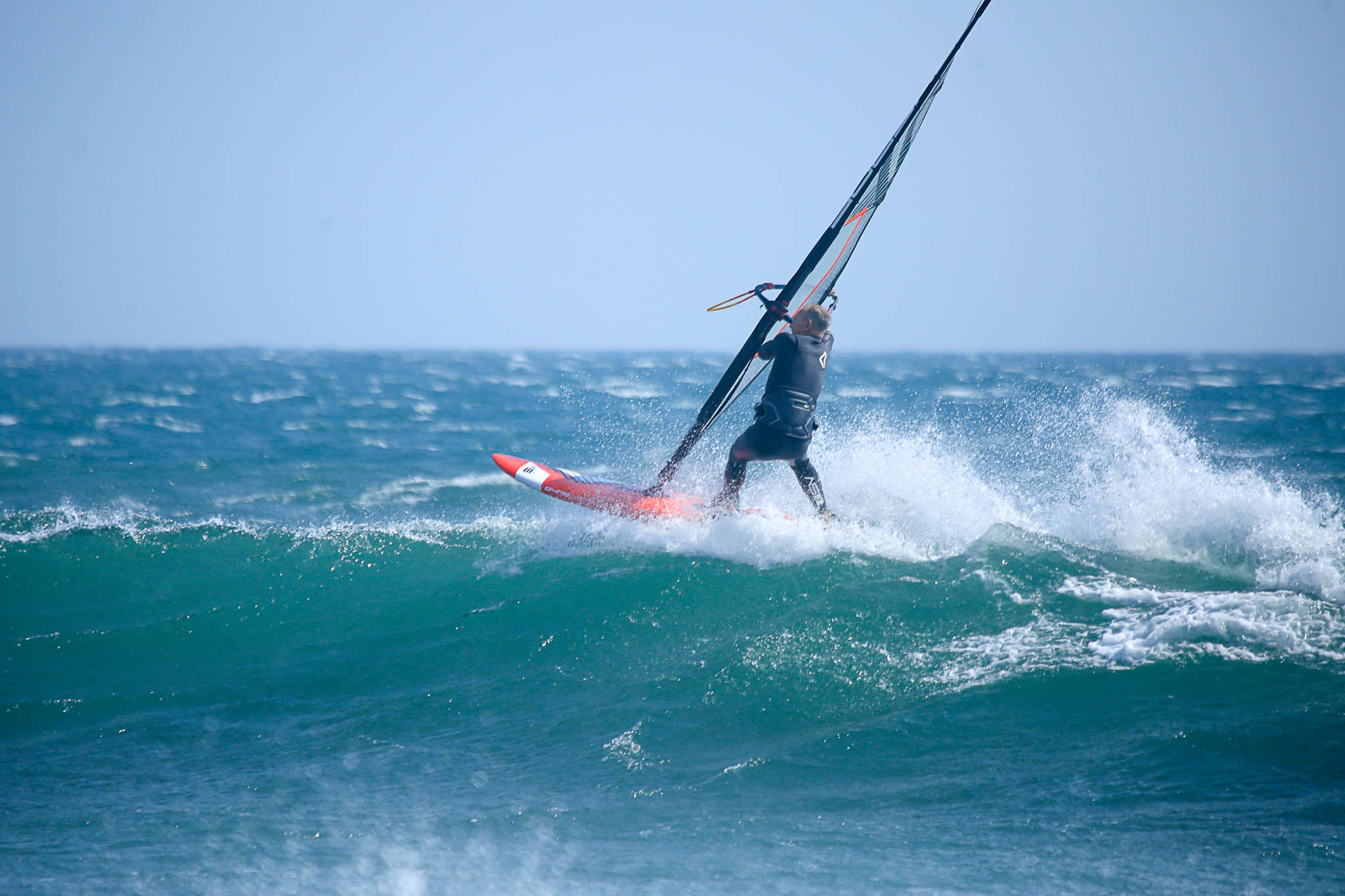
Simon Says
The actual wave riding itself is probably the easiest bit, especially if you’ve practiced your flat-water wave riding skills. The emphasis is on the whole Warrior ethos – Looking and leaning where you want to go and using the rig as a counter balance. We’ll go through more of that in the next issue with some examples of real life windsurfers. Until then, any questions fire away!
Windwise Winds Of The World Tour
Tenerife / Bonaire / Alacati / FeelViana / Prasonisi / Mauritius & More!
Latest availability @ www.windwise.net
Improve your windsurfing and try some Severne gear?
Freeride + Freewave + FoilWise
Copyright: Simon Bornhoft Windwise 2022
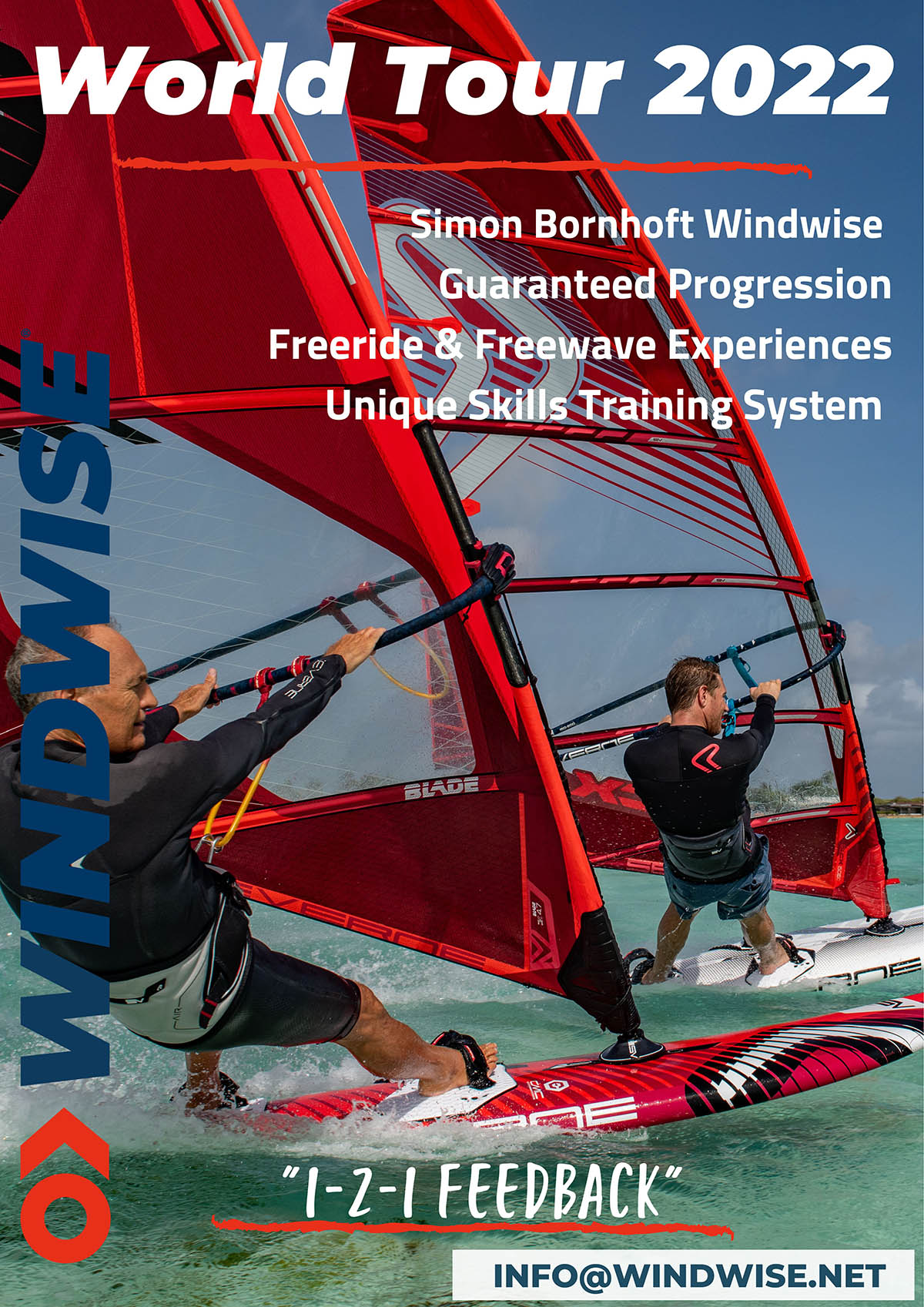
More guides
SPECIAL WINDSURFING DAYS – EL NINO TURNS ON
Tenerife offered several closely spaced wave sailing sessions around the Christmas period in the winter months with some exceptional conditions with the arrival of the first winter swells.
A particular spot, that did not deliver a single day the previous winter, now had Severne rider Dieter Van Der Eyken as excited as a kid on Christmas day.
West Oz Groms Dominate Oceania Youth Wave Classic
The 2024 Jaffle Shack Oceania Youth Wave Titles just concluded after four days of intense competition and coaching with the likes of Jaeger Stone.
It was undoubtedly one main events of the year for the youths in Australia. The Severne grom team showcased some serious skills and secured top positions in all U18 and U21 divisions.
BEST WINDSURF WAVE FIN SETUP
In the dynamic world of windsurfing, finding the best windsurf wave fin setup can make all the difference in your performance and enjoyment on the water.
MAAIKE HUVERMANN AND LENNART NEUBAUER ARE THE NEW EUROPEAN FREESTYLE CHAMPIONS
MULTI-YEAR WINNING STREAK FOR TEAM SEVERNE AND THE FREEK FREESTYLE SAIL
With a promising forecast On hand and two European freestyle champions to be awarded, the Freestyle Pro Tour assembled a grand final event in Brouwersdam, Netherlands.
CHOOSING THE RIGHT BOARD – Understanding Your Board Design
Windwise coach and Severne Team rider Simon Bornhoft continues his easy-to-follow guide to help choose the right board for your level and style of windsurfing. Last feature we categorized the whole range. For this issue we delve deeper into key characteristics that will help determine which board is right for YOU.
Choosing the right board – the style guide
Severne Team Rider and Coach Simon Bornhoft, takes us through an overview of all the different board styles categories to help you build the foundations of choosing exactly the right type of board for you and your quiver.
Dyno Diaries with Simon Bornhoft – One Board One Year – Multiple Progression
As the year closes in, Simon Bornhoft looks back on his Windwise experiences from 2022 picking out some key tipping points of progression and also demonstrates how the Dyno is one board that you can take everywhere with you.
DYNO BOARD SETUP WITH SIMON BORNHOFT PART 19 – HOW TO PREPARE FOR WAVES PART 4
Push it, drive it and accentuate! When conditions are tricky or you’re new to a wave environment, it’s important to stick to a plan and ‘try’ to massively exaggerate everything, no matter what you’re faced with. So, what better than to check out some real examples of Severne rider and Windwise coach Simon Bornhoft’s clients riding the Dyno and putting into practice some of the skills we’ve covered in our recent wave series.
EVERYTHING YOU NEED TO KNOW ABOUT YOUR HARNESS LINES – HANG IN THERE PART 4 Windsurf Foiling
Windwise coach and Severne Team Rider, Simon Bornhoft, continues his ‘Hang In There’ series, looking at different windsurfing styles and disciplines. For this issue we focus on windsurfing foiling and how to get set up for maximise flying time.

